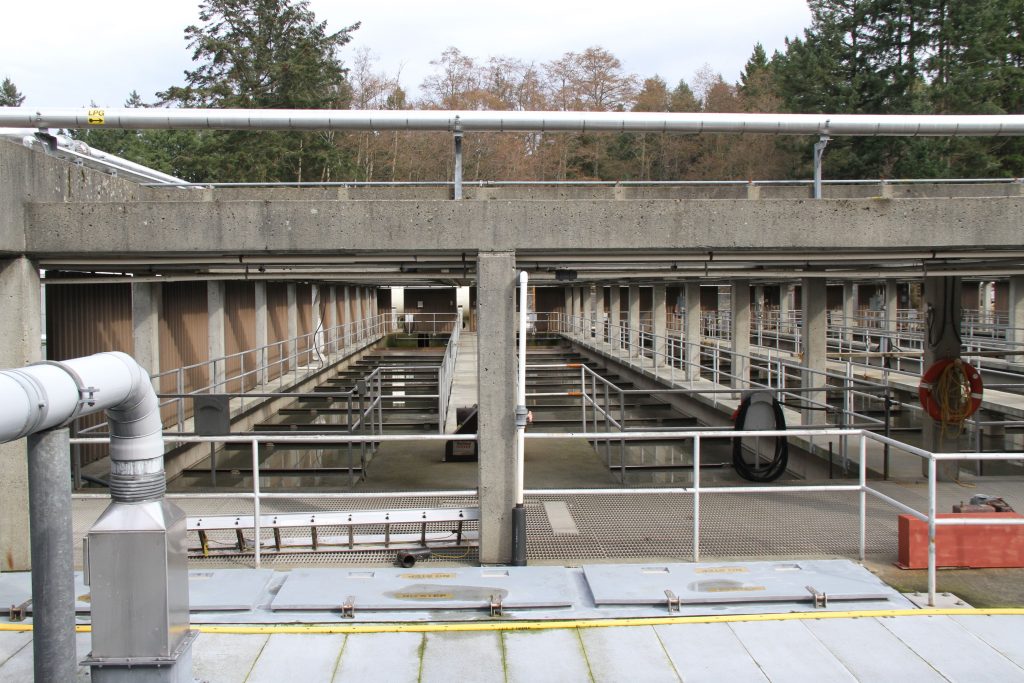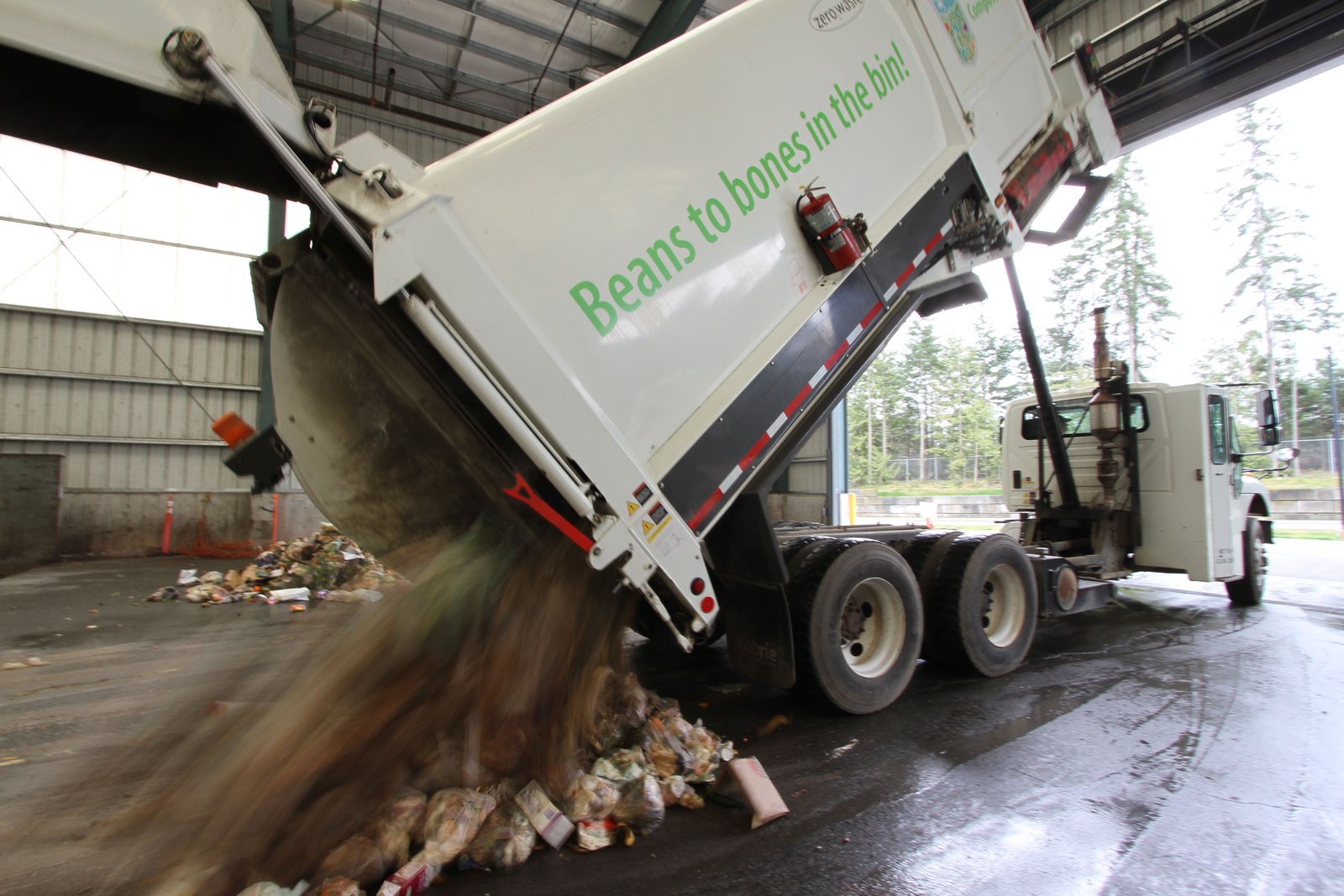By David Dodge and Duncan Kinney
Ecologist Peter Marshall put it best.
“Waste itself is a human concept; everything in nature is eventually used.”
Head to a forest and see if you can spot any waste. Fungi are breaking down the dead trees, the leaf litter on the forest floor retains moisture and protects the soil from the sun. Even the droppings from the deer and the rabbits are broken down and used by the eco-system around it.
As a species we’re cottoning on the fact that what we consider waste is often a valuable resource. We’ve featured Edmonton’s waste management system, and Vancouver’s sewage district heating system on Green Energy Futures before, but even mid-size cities like Nanaimo now feature thriving businesses, partnerships and projects that are turning various streams of waste into compost, electricity and carbon credits.
Chris Midgley is the manager of energy and sustainability for the Regional District of Nanaimo. Located on the east coast of Vancouver Island in British Columbia the district features the cities Nanaimo, Parksville, Qualicum Beach and Lantzville with around 145,000 people calling it home.
“It’s part of a general philosophy around waste where you treat it not as a waste product, but as a resource. Try to recover as much as you can. As a regional district we’re responsible for managing all these different streams of waste, so (we) try to find opportunities to generate energy or other benefits from those materials,” says Midgley.
The flagship

Recyclables and organics are collected separately in the Nanaimo Regional District waste management system. Photo David Dodge
The flagship program in Nanaimo’s case is curbside organic pickup. Put your organic waste and food scraps in the green bin, put it on the curb and it gets picked up and composted.
A 2004 study found that 34 per cent of the waste that gets picked up in the Nanaimo Regional District could be diverted through this kind of program. By diverting this waste not only will the city get far more life out of its current landfill, but it’s turning that stream of waste into a useful product – compost.
Compost, especially the high quality compost you’re able to create when the organic material is separated from other kinds of waste at the source is a valuable product. The compost that is made from the source material provided by the people of Nanaimo currently retails for $34.95 a cubic yard through a private company.
Currently the Regional District of Nanaimo collects about 2,000 tonnes per of organic waste per year. On a spring afternoon I followed a garbage truck on its rounds ending at the waste transfer facility and it’s quite an operation. Truck after truck full of gross, sodden food waste is dropped off (imagine a never-ending Gallagheresque mélange of food hitting the floor here) and carted away to the nearby composting facility.
And while it’s not the most appetizing scene, it does offer environmental benefits. By keeping the organics out of the landfill you’re able to drastically reduce the amount of leachate that the landfill produces; leachate being the gross, contaminated water that collects as water passes through the landfill and collects in a low spot.
When those 2,000 tonnes of waste a year don’t end up in the landfill and don’t break down anaerobically (in the absence of oxygen) you avoid the release of methane, a very potent greenhouse gas. This makes curbside organic collection the Nanaimo district’s secret weapon in reaching carbon neutrality, a target all municipalities in B.C. must meet.
Landfill gas
Speaking of organic material breaking down anaerobically and creating methane (a frequent topic of conversation around the Green Energy Futures office let me tell you) that’s what’s happening in the district’s landfill right now. For decades it was a regular landfill and as a result they’ve got quite the resource to tap.
Their 1.3-megawatt landfill gas recovery project was commissioned in 2009 and it ensures that the majority of the methane that the old landfill produces is collected and burned for electricity. The annual greenhouse gas emissions savings are more than 21,000 tonnes.
There are landfill gas recovery projects around the country and it’s a great way to reduce your greenhouse gas emissions and make some money by selling electricity into the grid.
Biogas cogeneration

The sewage treatment facility at the Nanaimo Pollution Control Centre. Sewage is piped into biodigesters that produce methane to be burned in a small cogeneration power plant on site. Photo David Dodge
that again pulls the double-whammy of reducing greenhouse gas emissions and generating clean electricity. It’s a biogas cogeneration project that, when fully operational, tops out at 330 kilowatts.
They collect the biogas, or methane, from sewage waste that is broken down in one of three digesters in, you guessed it, an anaerobic environment. Then it’s burned in a boiler for electricity and heat. While the district was collecting biogas before and burning it for heat they were only able to use about 40 per cent of the biogas they collected with the rest having to be burned off.
“This is a cogen facility, so cogeneration of electricity, but also heat. So the heat that’s being produced at this site is actually being directed back towards the buildings where it’s heating the buildings and providing comfort to the workers here, but also going into the process heat for the treatment of the sewage itself, so heating the waste that’s in the digesters,” says Midgley.
Heating that waste is a necessary and energy intensive step in the biogas process that is now handled for free via a resourceful use of waste.
The value in weeds
The value in waste is all around us. As gardening season gets started we should keep in mind this quote from Ralph Waldo Emerson.
“What is a weed? A plant whose virtues have not yet been discovered.”
It takes just a slight tilt of the head to change the way you see the world and discovering the virtues of the things we dislike can lead to valuable new businesses and innovations.
It’s encouraging to see smaller cities and districts figure out the business and clean energy opportunities in their garbage.
[flickrshow:72157633314569902,width=625]
